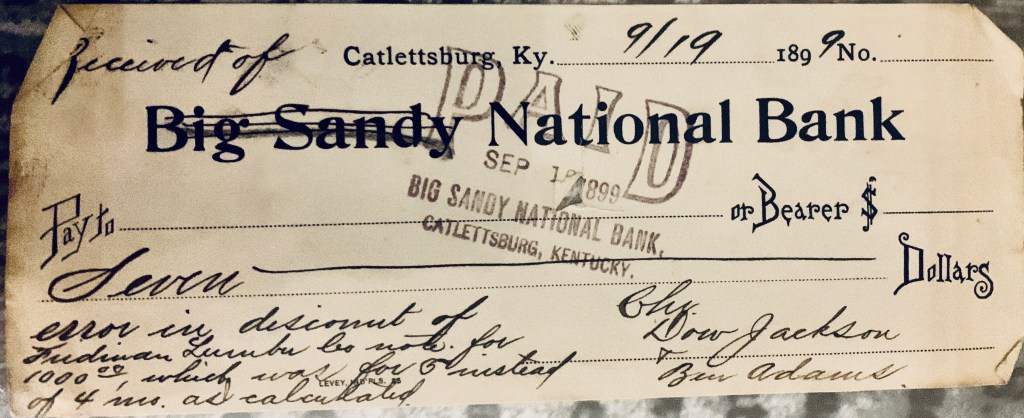Doris Miller (1903-1993), a longtime educator, historian, writer, and poet operating in the area of Huntington, West Virginia, composed this biography of Aracoma, a well-known Native American figure who lived in present-day Logan, West Virginia. This is Part 2 of her composition.
The father whose death was mentioned by Aracoma was the noted Shawnee sachem, Cornstalk, leader at the Battle of Point Pleasant on October 10, 1774. After the treaty of Camp Charlotte was signed following that battle, Cornstalk appears to have been constant in keeping his promise to be a friend to the border Virginians. The American Revolution was then in progress, and Tory colonists strongly entrenched in Canada were using every influence they could bring to bear on the Indians to persuade them to harry western settlements of the colonies that were banded together in rebellion. In September, 1777, Cornstalk went to Fort Randolph, on the site of Point Pleasant, to warn the commander of the garrison, Colonel Arbuckle, of impending hostitlies from other Shawnees, incited by the British.
As a reward for his warning, Cornstalk was held with two companions as hostages. While Colonel Arbuckle waited for a messenger to reach the governor of Virginia and a reply to be received, two men from the fort crossed the Ohio to hunt venison and were waylaid by hostile Indians. One of the men was killed and scalped. Members of the garrison were so enraged that they killed Cornstalk and his companions in vengeance, defying officers who sought to restrain them from an act in violation of military ethics.
Aracoma’s husband was Boling (or Bowling) Baker, an English soldier who had come to America with General Braddock’s army. Though he had been called a deserter, he may have been captured by Indians lurking along the path of Braddock’s march or in the route which followed the English army’s disastrous engagement with the French and Indians on July 9, 1755.
Apparently Baker had been taken to Cornstalk’s town at Pickaway Plain, near Circleville, O., and had been made a member of the tribe. There he met the sachem’s young daughter and at some later time became her husband. Together they were leaders of the Indian settlement in present Logan County.
In addition to the town located on the island at Logan, the Indians apparently had a camping place on Horsepen Creek where the braves sometimes camped with whatever horses they might possess. The animals could be walled in here by steep mountain sides and with hickory withes wound from tree to tree. Still today Horsepen Creek and Horsepen Mountain bear the names first white settlers gave them for their connections with the earlier inhabitants.
At this time, land-hungry white settlers were pressing continually westward from eastern Virginia. it is said that scouting parties sent out after crops were gathered in the fall of 1779 found Indians encamped with a strong force on Horsepen Fork of Gilbert’s Creek and on Ben Creek and returned home to wait until after spring crops had been planted for another visit. Also, Indian depredations and the occasional massacre of a white settler’s family by stray bands of Indian hunters far from home kept the frontiersmen alert and distrustful of all Indians, however peaceful and friendly.
Tradition says that they Indians on the Guyandotte prospered until 1776, when their settlement was stricken by a great scourge. The pestilence may have been smallpox, measles, dysentery, or even some lighter disorder, for Indians have no immunity built up against diseases which beset the white men. Among the many who died were the children of Aracoma and Boling Baker.
As repeated countless times, the Aracoma legend varies in details. Some begin the story by telling of Boling Baker’s arrival as a captive in the Shawnee village. They say that Aracoma interceded with her father when the young Englishman was about to be made to run the gauntlet, just as Pocahontas protected John Smith. Though doubtless based on surmise, the story could be true, for captives who escaped from the Indian villages in Ohio told of having been forced to run the gauntlet. Some romanticists believe Baker’s love for the Indian maiden began with his gratitude that day, and that also could be true.
Source: West Virginia Women, Richwood, WV: Jim Comstock (1974), p. 7-9.
For more about Doris Miller, go here: https://mds.marshall.edu/cgi/viewcontent.cgi?article=1284&context=sc_finding_aids



